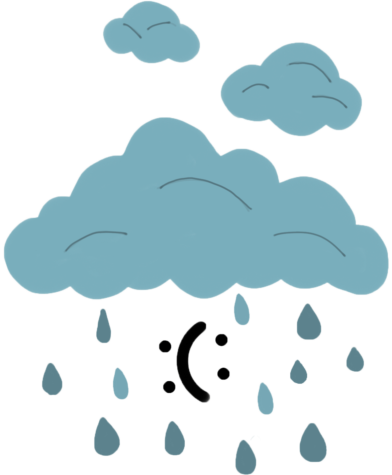How Weather Changes Our Lifestyle.
January 10, 2019
To many, fall and winter means holidays, family gatherings, snow and staying in, but that is not the case for everyone. Many may suffer from Seasonal Affective Disorder (SAD), which is a type of depression that comes and goes with changes in weather, affecting 3 million U.S. citizens per year, according to U.S. National Library of Medicine. SAD is related to the loss of sunlight in the fall and winter. Symptoms include low energy levels, problems sleeping and having no motivation to do basic things, like eating and taking a shower.
According to America’s Family Physician, weather change can affect women four times more than men. Having depression or bipolar disorder may worsen with the seasons and is more common among younger adults, teens and children.
Once the low temperatures pass, people start getting their strength back and get more desire to do tasks. Because the symptoms of SAD are triggered by lack of exposure to light, they tend to go away on their own when available light increases.
But for those who want a faster recovery, they can start some kind of therapy. LIGHT counselor, Katrina Spottsville said talk therapy is a way to get help find a solution to why someone feels sad.
“I think they can overcome it by recognizing and knowing the triggers that start depression,” Spotsiville said. “If they are able to recognize what’s holding them back, like the time of the year or maybe their mood changes, they can work and overcome the problem.”
Although SAD is mostly caused by weather, Spottsville mentions school can be a trigger for students.
“With school starting in the fall, standardized testing being a requirement, and final exams can place students into depression. Just what’s expected from them at school can cause their mood to change and that is not healthy for them.”
With therapy being one of the main resolutions, many start support groups to not feel alone. Spottsville hopes North Garland can start a group for those students affected by SAD and depression.
“I think we can have programs in certain places for students dealing with stress,” Spottsville said. “I am the LIGHT counselor, so I help students with all types of depression, anxiety and mental disorders. A group for students to know they are not alone and that they can talk out their problems, would be so helpful not only for me but for those dealing with mood swings.”
Many who suffer from mood swings during weather changes may not see it as something to be concerned about. In reality, mood swings are one of the main SAD symptoms and something people may need support from loved ones to get through, according to Angela Greene who recently lost her brother to depression.
“I think people ignore it just like they ignore or deny other mental illness. Either they don’t believe it’s real, or they don’t believe it’s really happening to them,” Greene said.
Greene recommends that someone experiencing SAD know they are not alone and that they can get through it.
“Letting them know they’re valid, that isn’t their fault and that you are there to offer help can help them a lot,” Greene said.
It’s estimated that in the U.S., about 4 to 6 percent of people experience SAD. When symptoms first develop, it can be confusing, both for the person with SAD and family and friends. Getting plenty of exercises, being patient and asking for help can give a better feeling for a longer amount of time.
“Allow them to speak to you with no judgment, but in no way try to act like their feelings are invalid or you are trying to, fix, them in any way,” Greene said.


